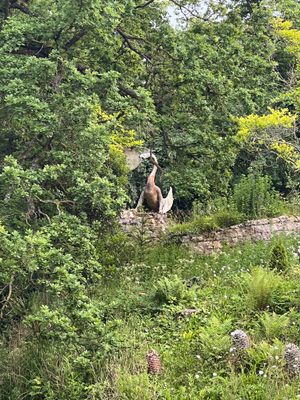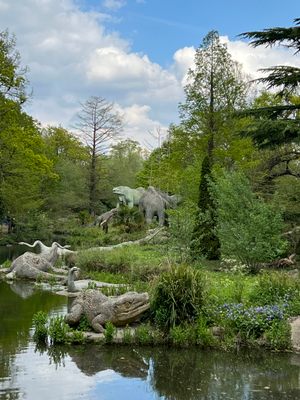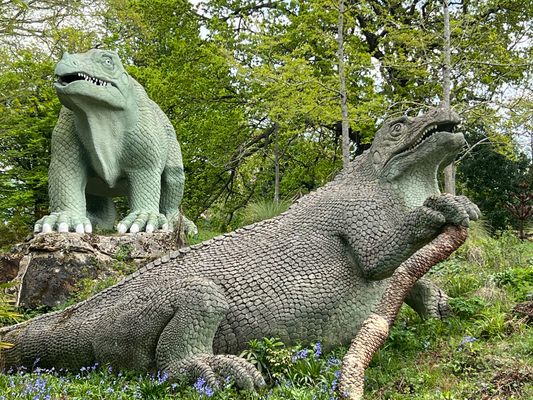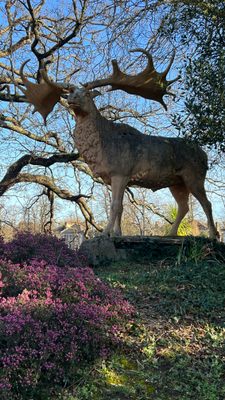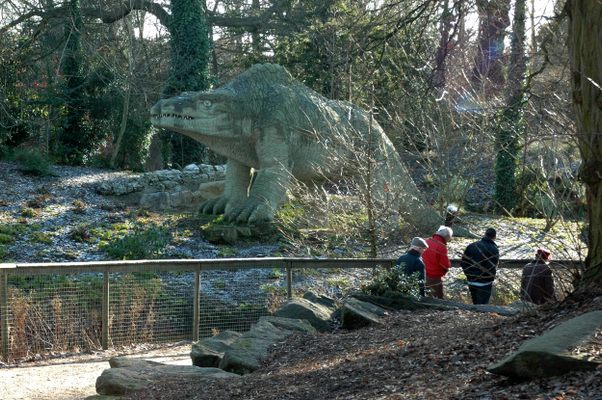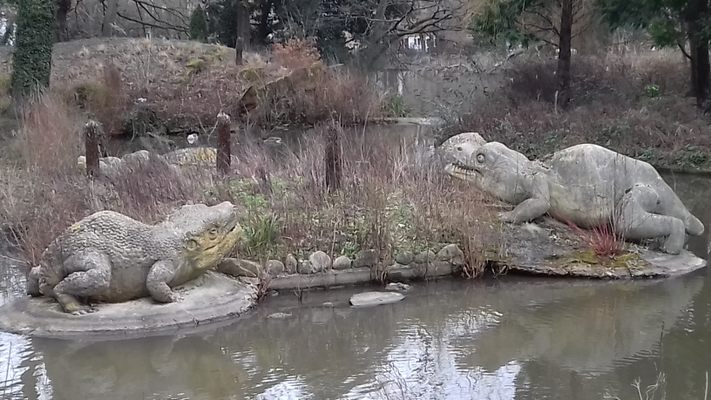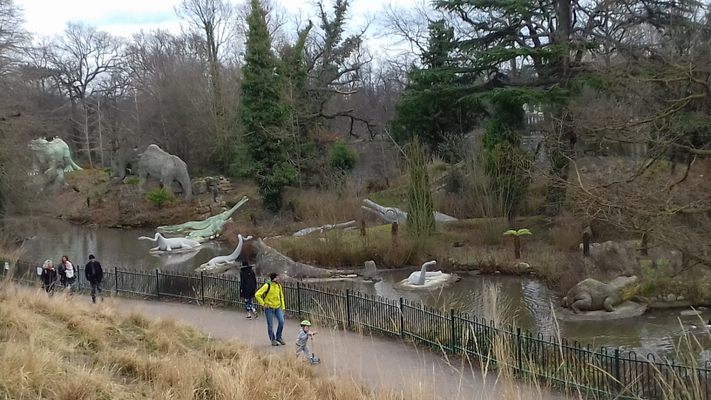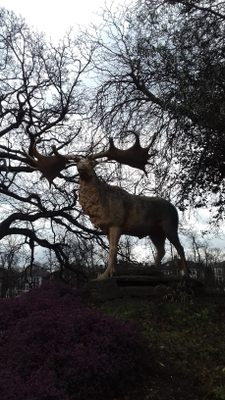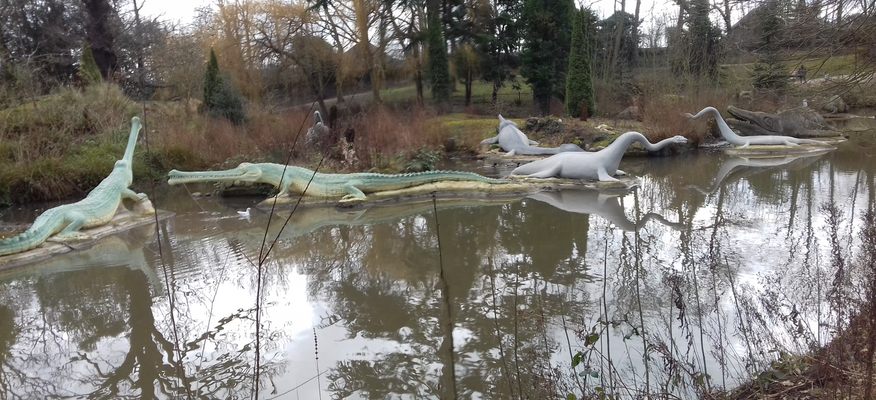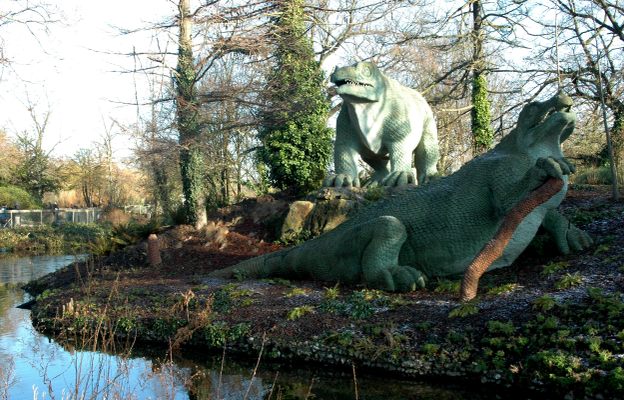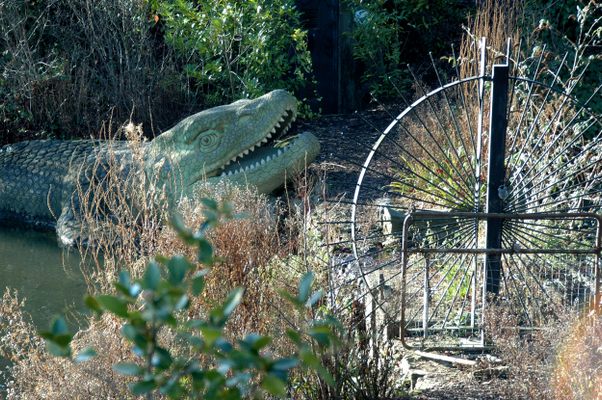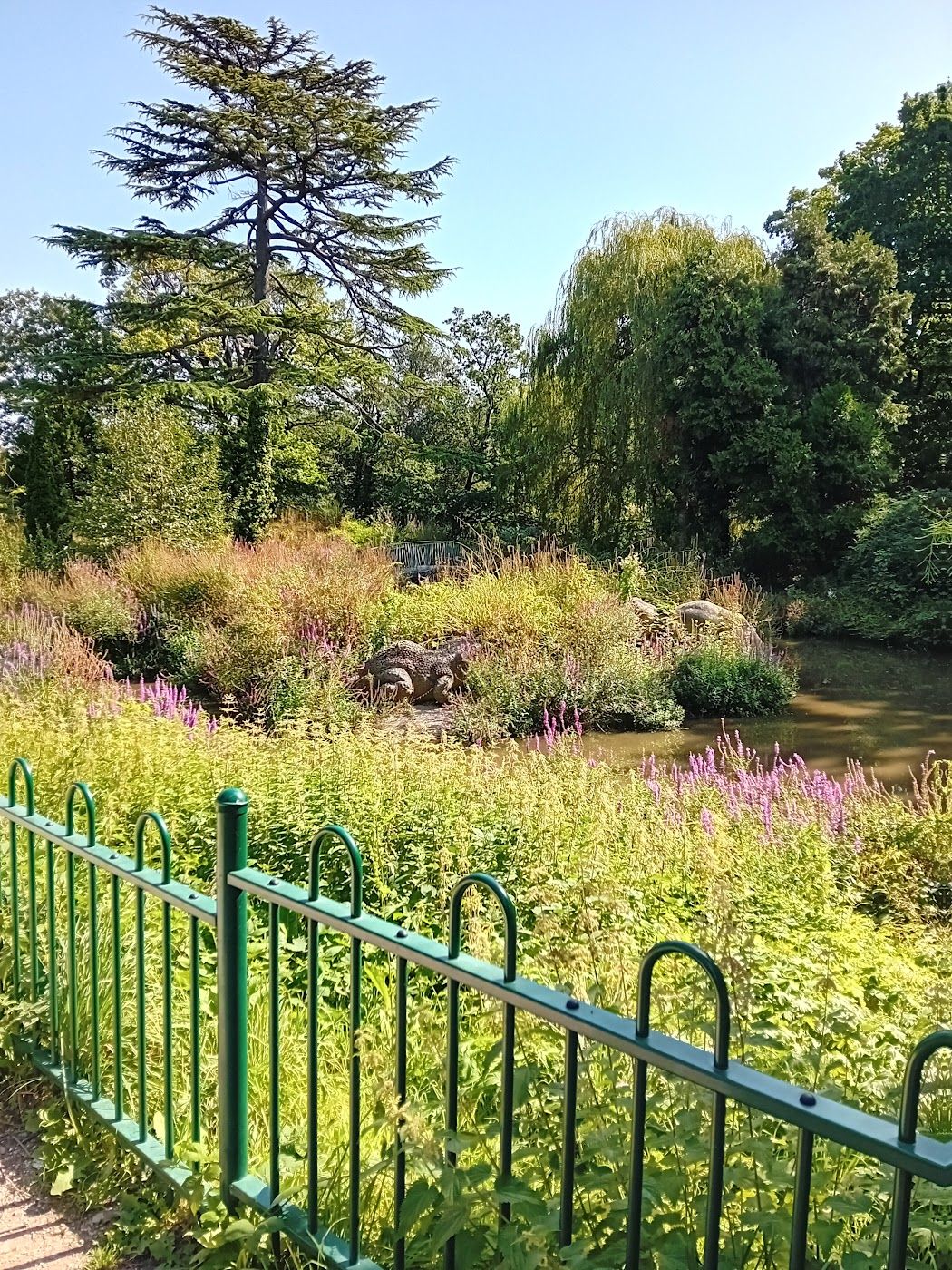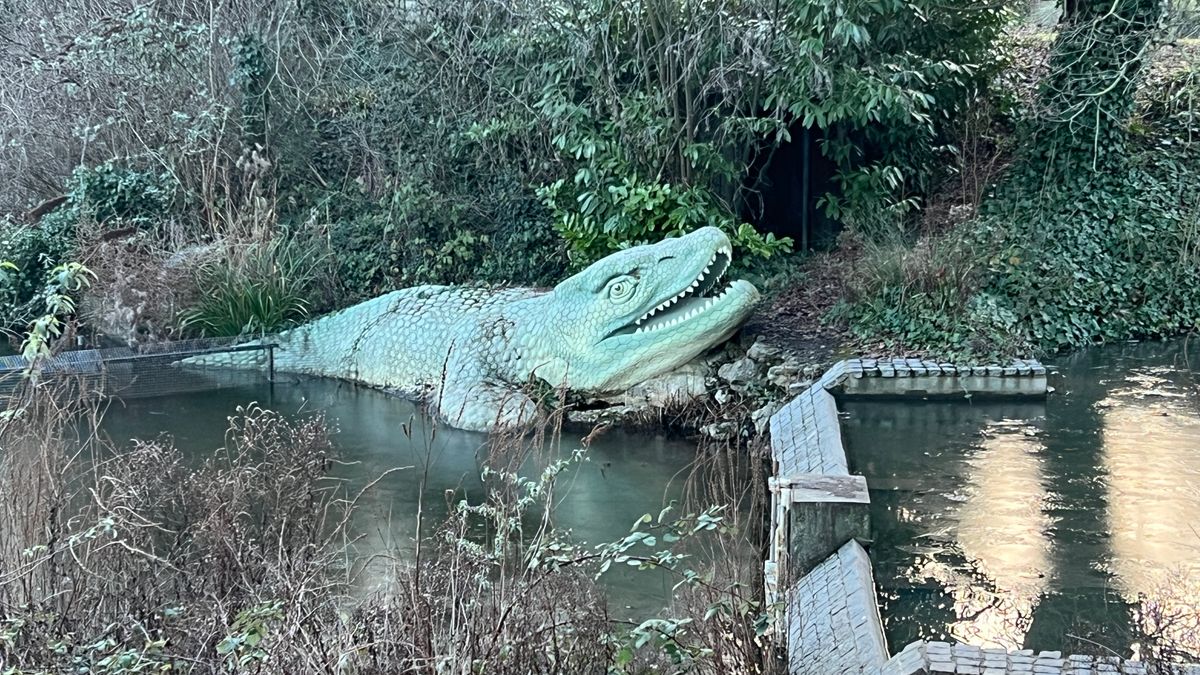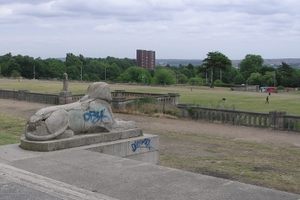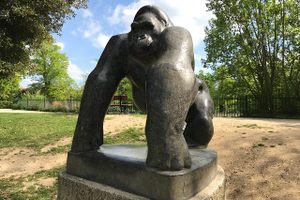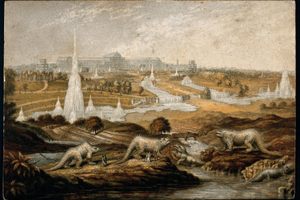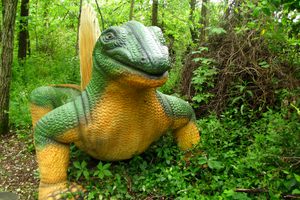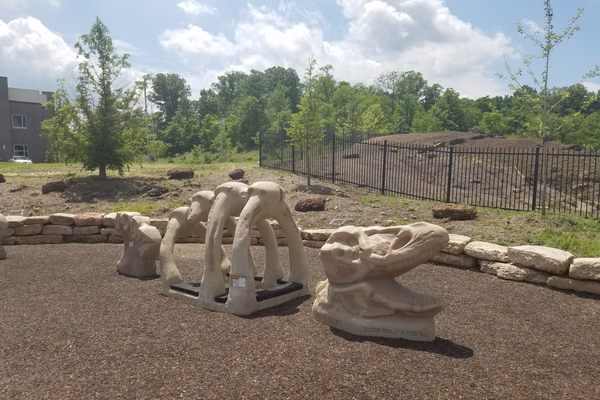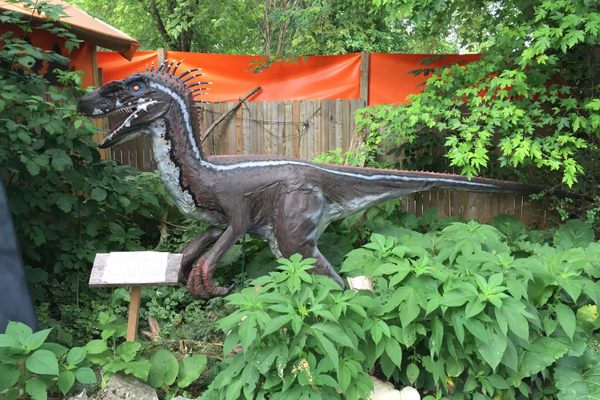About
To the Victorians, the Crystal Palace in London was the marvel of a gilded age. The showpiece of the 1851 Great Exhibition, it housed exhibits showcasing the skill and ingenuity of the British Empire, the biggest the world had ever seen. When the Great Exhibition finished in October 1851, the Crystal Palace was bought and relocated to Upper Norwood, an up-and-coming suburb that would become home to such luminaries as writer Emile Zola and artist Camille Pissarro.
The grounds around the building became known as Crystal Palace Park and were extensively renovated. As part of this renovation, sculptor Benjamin Waterhouse Hawkins was hired to build life-size models of extinct animals. However, upon receiving advice from famed paleontologist Sir Richard Owen, he decided to build dinosaurs as well. In total, Hawkins made thirty three models of over fifteen different species of which the most famous were Iguanodon, Megalosaurus, and, despite not being a dinosaur at all, Ichthyosaurus. Hawkins celebrated the launch of the models on New Year Eve 1853 by holding a banquet for twenty people.
The models were a huge success and the Crystal Palace Company was even able to profit from some of the world’s first tie in merchandise—miniature models were sold as educational aids for a price of £30. But unfortunately, at a price of £13,729, the models were very costly and several of the models were scrapped, including some that had been partially built.
Over the years, science caught up with the statues as further developments in the field showed the sculptures to be inaccurate. For example, the park’s Dicynodons resemble turtles instead of the hippopotamuses to which they are more closely related and the two Ichthyosauruses are shown basking on land, an act that would have proved fatal. Perhaps the most glaring error was the horns on the iguanodon’s noses, which later turned out to be thumb spikes. Over the years, the park fell into disarray, a problem not helped when the Crystal Palace was destroyed in a fire in 1936.
Despite various half-hearted attempts at repair, including the use of plasticine, it was not until 2002 that the dinosaurs finally underwent a full restoration and in 2007, they received a Grade I listing, putting them in the exalted company of such buildings as Nelson’s Column, the Houses of Parliament, and Tower Bridge.
Related Tags
Know Before You Go
The nearest train station is Penge West, although it can also be reached from Crystal Palace station and the terminus of the number 3 bus from Whitehall or Brixton. Enter the park from the south side and follow the signs to the dinosaurs. Public access to the islands is prohibited.
Published
February 6, 2011
Sources
- Wikipedia: Crystal Palace Dinosaurs: http://en.wikipedia.org/wiki/Crystal_Palace_Dinosaurs
- Wikipedia: The Crystal Palace: http://en.wikipedia.org/wiki/The_Crystal_Palace
- The Crystal Palace Dinosaurs Page: http://www.nyder.com/dinos/
- The Independent: "Crystal Palace's Dinosaurs Saved From Extinction" (August 2007): http://www.independent.co.uk/news/uk/this-britain/crystal-palaces-dinosaurs-saved-from-extinction-460558.html











